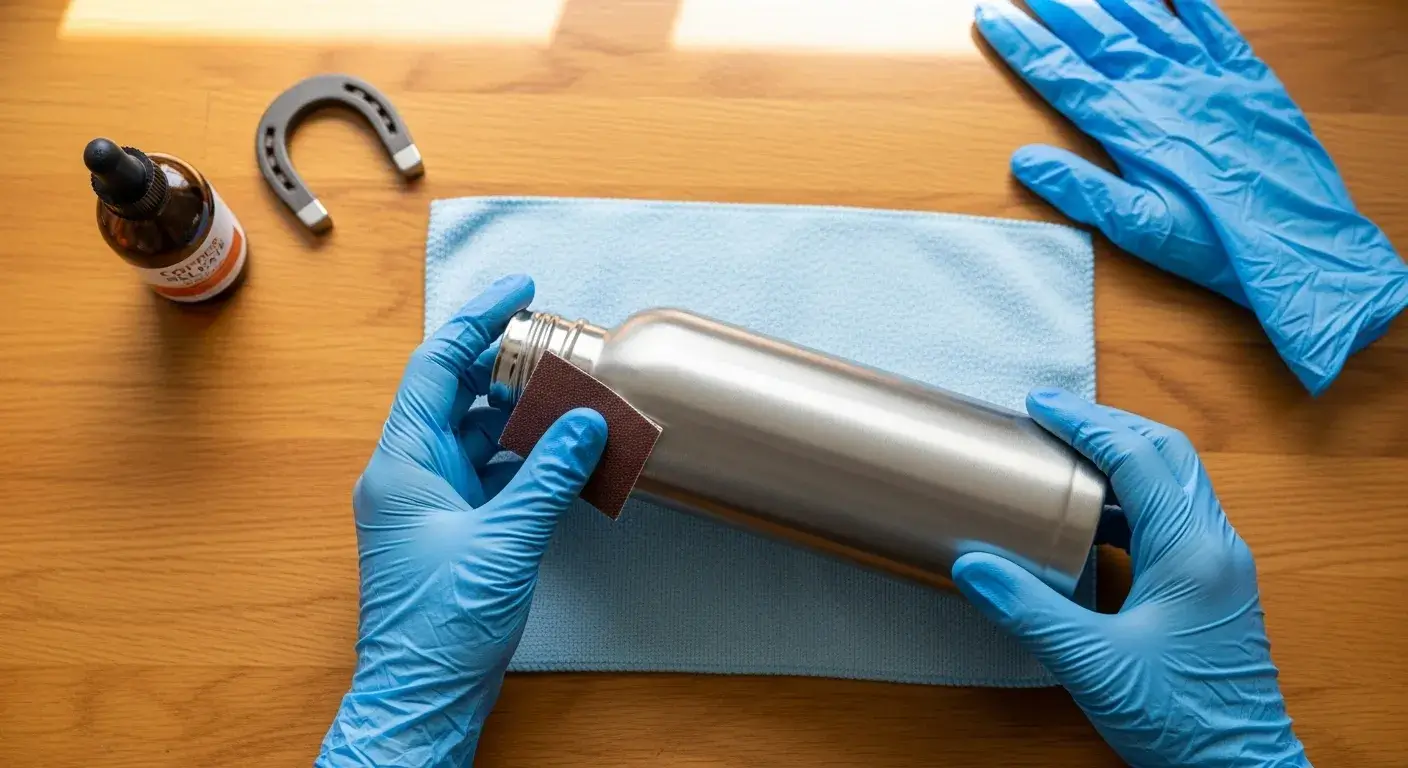
Not all stainless steel is created equal—and in 2025, verifying the grade is more important than ever. Whether you're sourcing, selling, or using stainless steel products, knowing it's truly 304 can protect your reputation, your health, and your bottom line.
Use simple magnet and chemical tests to verify if your stainless steel is 304 grade—accurate enough for home use with proper preparation.
Even if you're not a metal expert, there are easy ways to check if your product is the real deal.
What Makes Grade 304 Stainless Steel Special, and Why Bother Testing It?
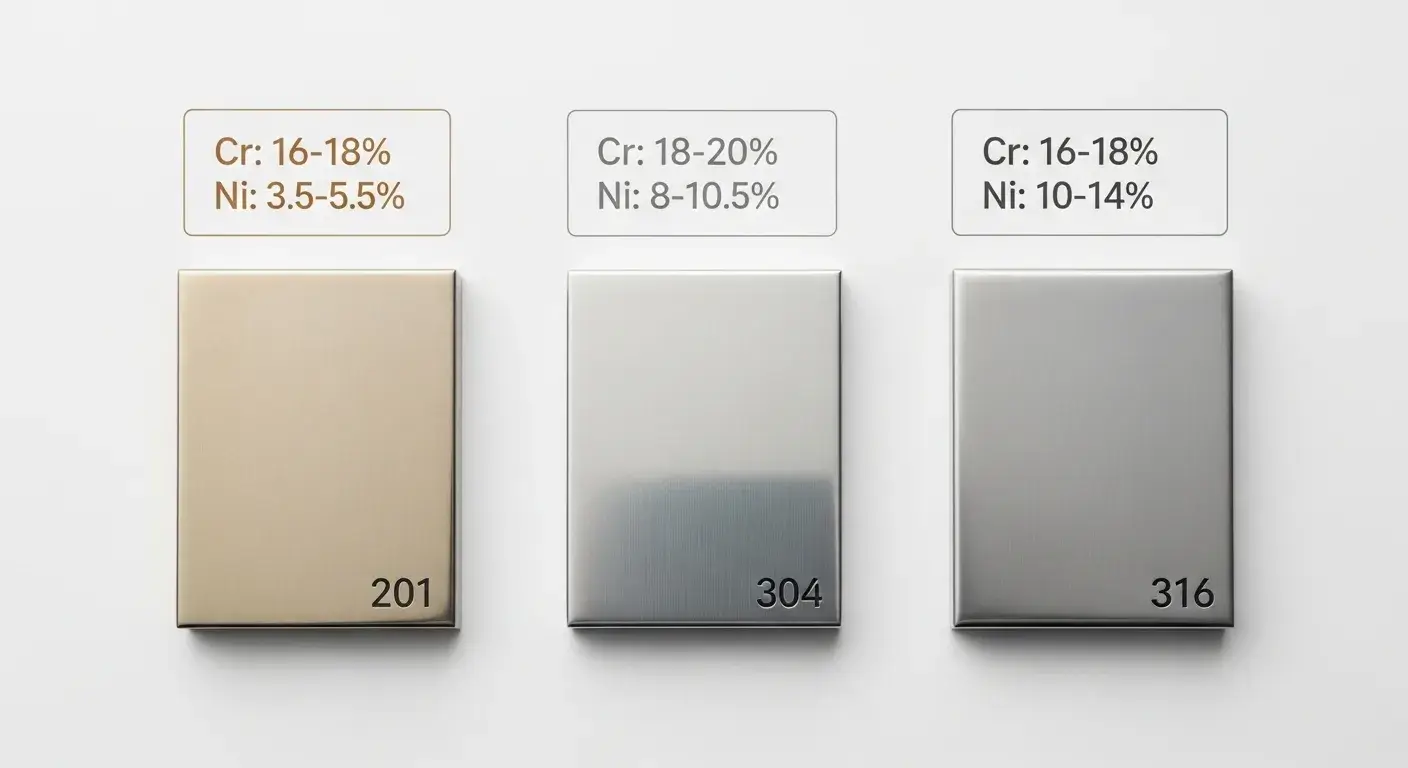
304 stainless steel is everywhere—water bottles, cookware, sinks. But just because it looks shiny doesn't mean it's safe or durable.
304 grade contains 18% chromium and 8% nickel1, which makes it corrosion-resistant and food-safe—but many low-cost substitutes lack these elements.
Why It Matters
If your "304" product is actually 201 or 430, it might:
- Rust in months, especially with acidic drinks or salty environments
- Leach unwanted metals if it lacks food-grade quality
- Fail under pressure, especially in structural or outdoor use
I've worked with clients who imported "304" bottles, only to discover rust within weeks. They lost trust—and money.
| Grade | Chromium % | Nickel % | Rust Resistance | Notes |
|---|---|---|---|---|
| 201 | 16–18% | 0–1% | Low | Cheap substitute |
| 304 | 18–20% | 8–10.5% | High | Standard for food contact |
| 316 | 16–18% | 10–14% | Very High | Marine-grade |
Verifying your material helps avoid returns, recalls, and safety issues.
Does the Magnet Test Accurately Identify 304 Stainless Steel?
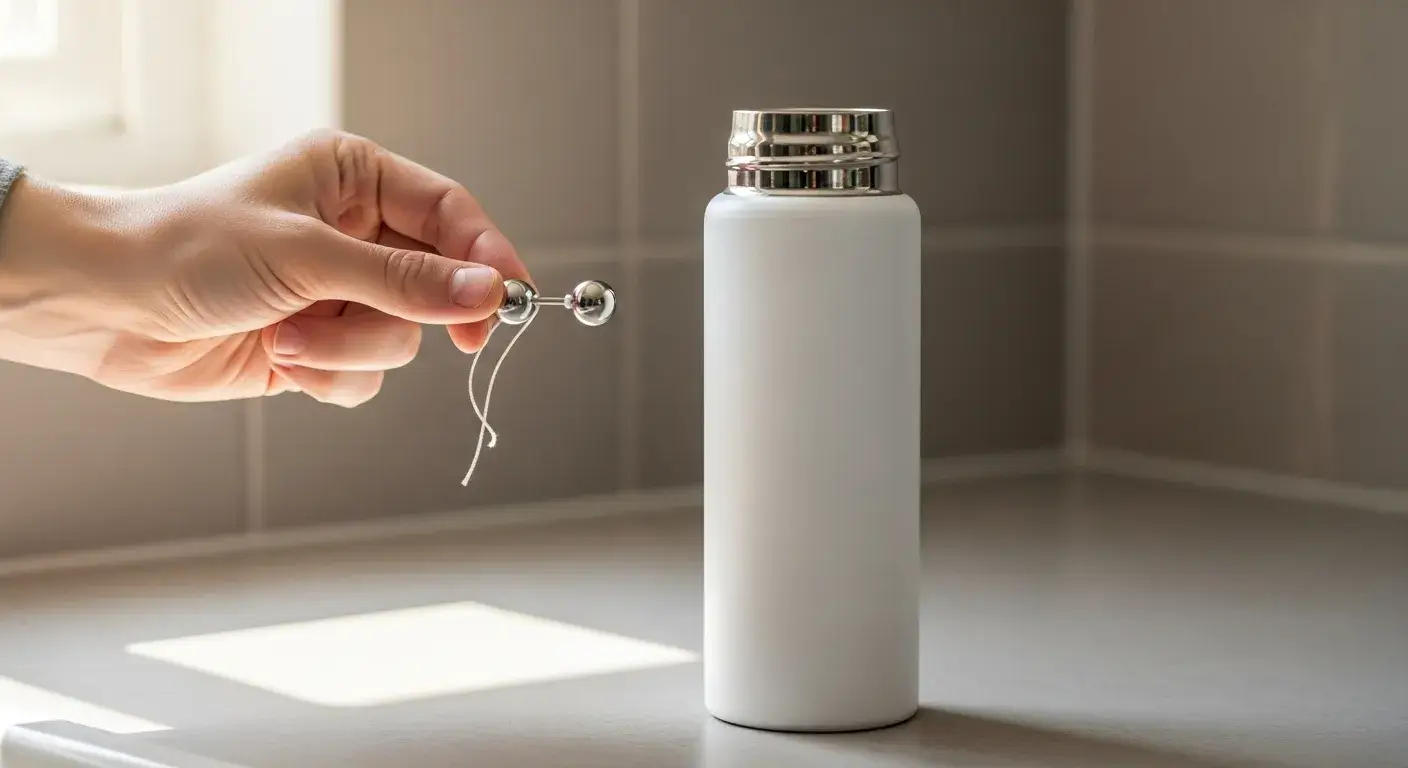
It's fast, free, and simple—but it's not foolproof.
304 stainless steel is usually non-magnetic2, but if it's been bent or rolled, it might show slight magnetic attraction.
How to Do It Right
- Use a small magnet on a string
- Test a flat, untouched section—not the rim or bent part
- Compare with known samples (201 is strongly magnetic)
| Result | Likely Grade |
|---|---|
| No pull | 304 or 316 |
| Weak pull | Work-hardened 304 |
| Strong pull | 201 or 430 |
I've had magnets stick slightly to 304 bottle lids (due to forming), while the walls stayed non-magnetic. That's normal.
Note: This test helps rule out ferritic steels like 430—but can't distinguish 304 from 316.
How Can Chemical Tests Like Copper Sulfate Confirm 304 Grade?
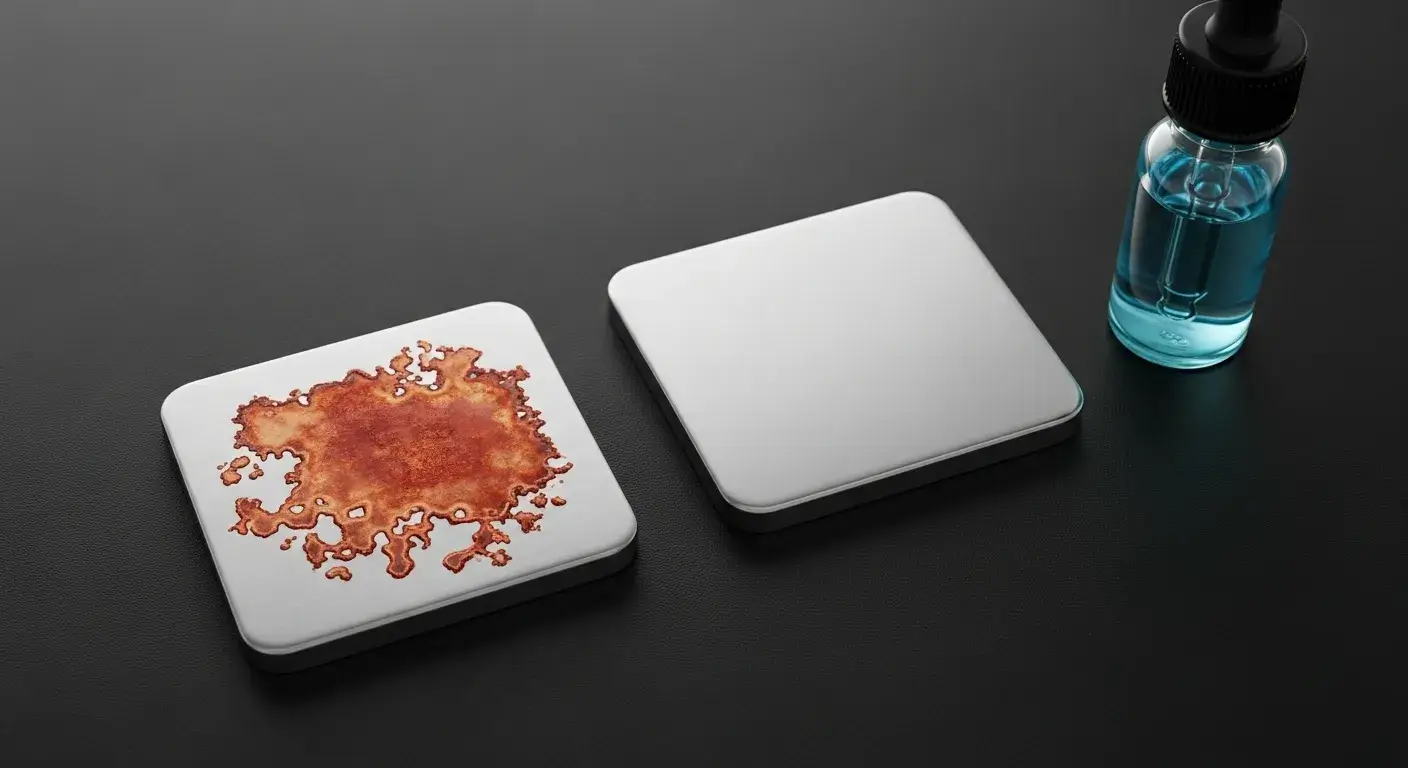
If you want more certainty than the magnet test, try a basic copper sulfate (CuSO₄) test—available in kits for under $10.
304 will not react with copper sulfate if the surface is clean—while lower-grade steels will turn red from copper deposition.
How to Do It
- Polish the surface with sandpaper or a clean cloth
- Add water, wipe, then apply 1-2 drops of copper sulfate
- Wait 1–3 minutes
- Observe the color change
| Observation | Likely Grade |
|---|---|
| No change | 304 or 316 |
| Red deposit | Carbon steel, 201 |
| Light pink | Possibly 202 or low-grade steel |
Safety Tip: Wear gloves and eye protection; avoid contact with skin and rinse thoroughly afterward.
I once tested two samples labeled "304"—only one passed the copper test. The other was fake 201 and rusted in less than a month.
Is Spark Testing a Reliable Way to Check for 304?
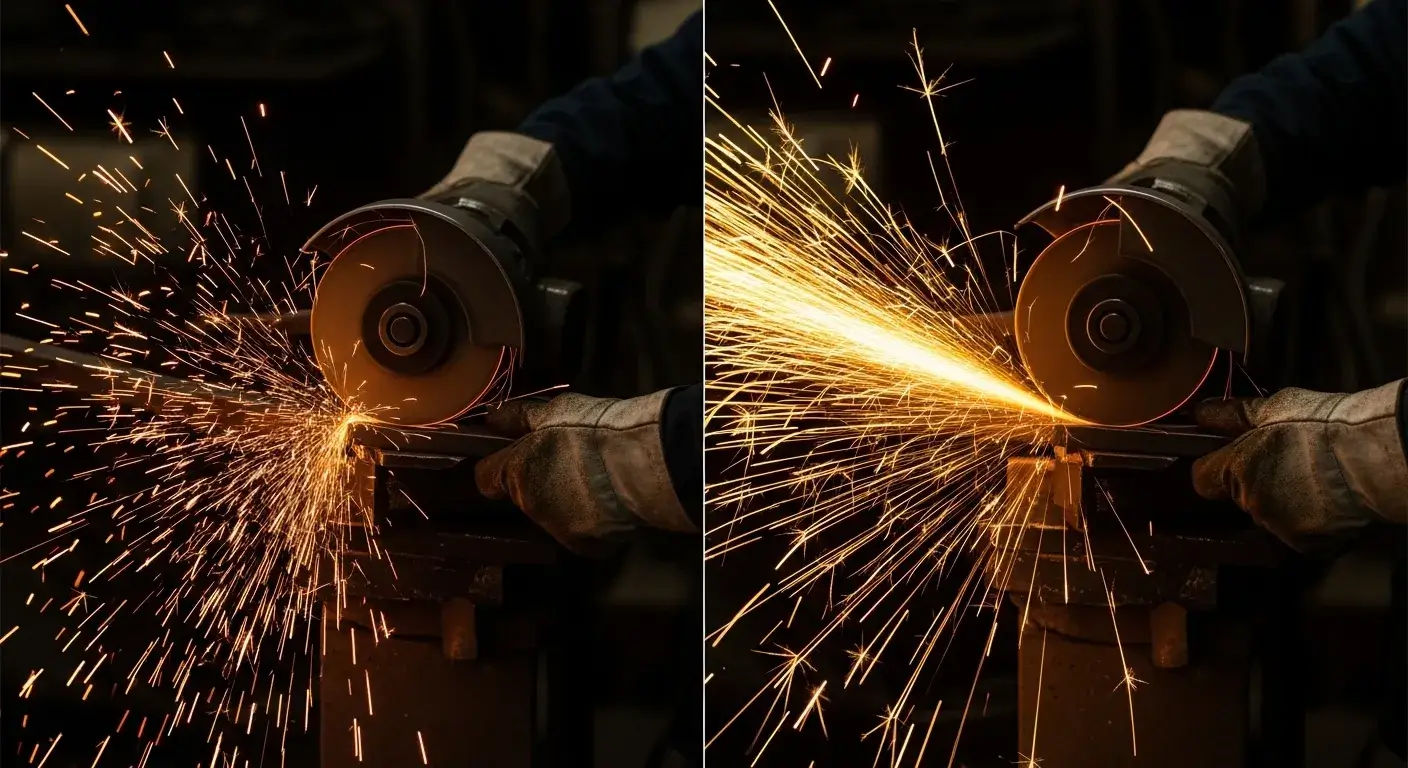
Spark testing involves grinding the steel and analyzing the sparks. It's used by metalworkers but less ideal at home.
304 emits short, red-orange sparks with few forks3—very different from the long yellow sparks of carbon steel.
Spark Test Guidelines
- Use a grinding wheel in a dark area
- Compare with a known 304 sample
- Look for:
- Short red sparks with few branches
- No bursts or long yellow tails
| Spark Pattern | Material Type |
|---|---|
| Short, red, few forks | 304 stainless |
| Long, yellow, many forks | Carbon steel |
| Slightly redder, fewer forks | 316 (has molybdenum) |
Warning: Always wear safety glasses and work in a fire-safe space. Sparks can travel up to 10 feet.
For small or polished parts like cups or tumblers, spark testing may not be practical—use it when working with raw materials.
When Do You Need Professional Lab Methods for Accurate 304 Verification?
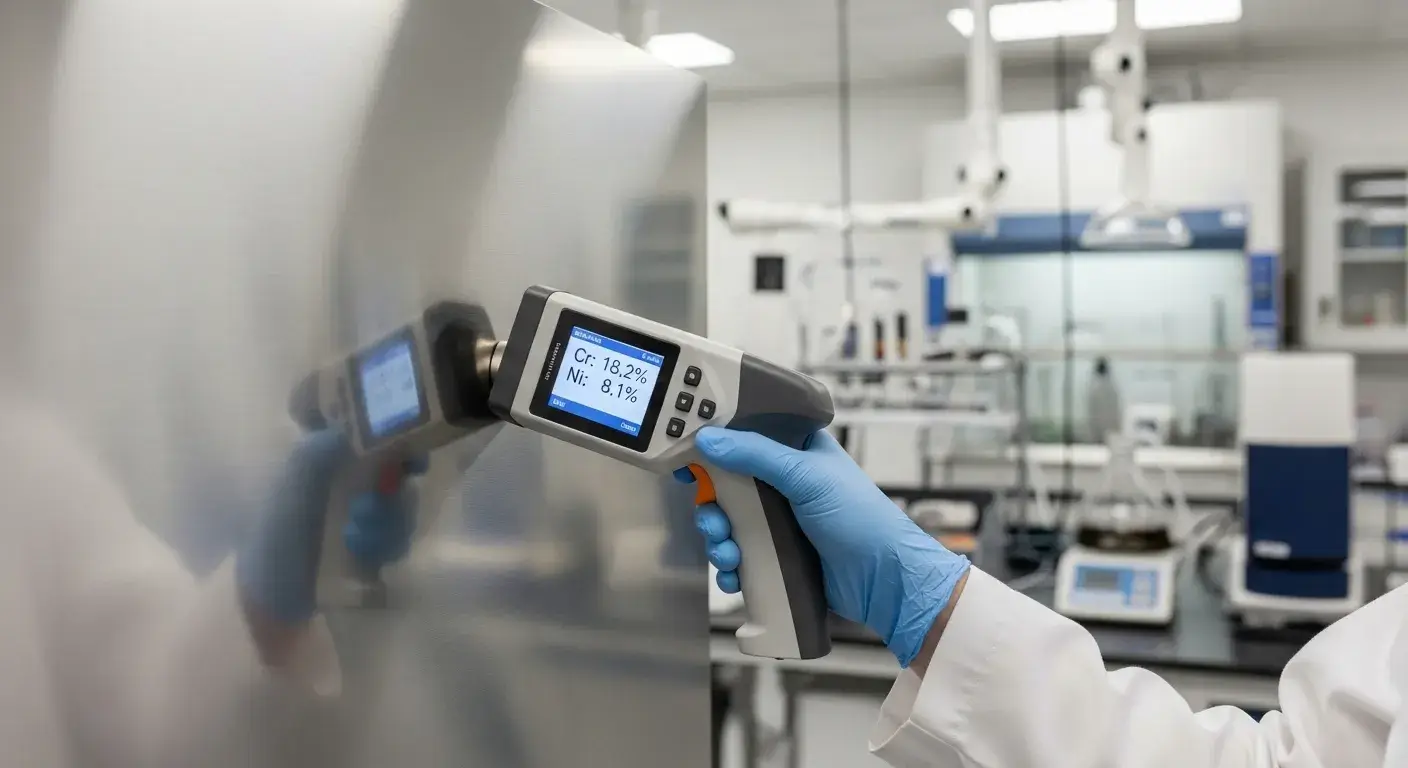
If your product is mission-critical (e.g., food processing, medical use), you may need lab-grade results.
Handheld XRF scanners or OES testing machines4 provide 98%+ accuracy by detecting exact chromium and nickel content.
Professional Testing Options
| Method | Accuracy | Cost (USD) | What It Detects |
|---|---|---|---|
| XRF Analyzer | 98% | $300 rental or $50/test | Cr, Ni, Mo, Fe composition |
| OES Lab Test | 99% | $100–$200 | Full elemental breakdown |
| Hardness Test | 85% | $25–$50 | Approx material comparison |
In 2025, even portable devices can link to smartphone apps for instant readings. If you're importing stainless steel products in bulk, test a sample from each lot.
A friend of mine almost approved a 10,000-unit shipment labeled "304"—until XRF showed it was 201. That test saved him $50,000 in returns.
What Are the Best Practices to Avoid Errors When Testing 304 Stainless Steel?

Even good tests can give bad results—if you skip the prep.
To avoid false results, always clean the surface, test more than one area, and combine at least two methods.
Best Practices Checklist
- ✅ Clean the surface with a cloth or sandpaper
- ✅ Use multiple tests (e.g., magnet + copper sulfate)
- ✅ Test in at least two locations
- ✅ Document your results (photos help)
- ✅ Avoid testing painted or coated surfaces
| Mistake | What It Causes |
|---|---|
| Skipping surface prep | False positive (rust/fake) |
| Testing only once | Misses grade variations |
| Wet or oily surface | Test interference |
| No safety gear | Skin/eye hazards |
At Sibottle, we test random batches using both DIY and XRF methods before shipping to ensure material consistency.
Conclusion
304 stainless steel is easy to test with basic tools like magnets and copper sulfate—if you prep properly and know what to look for.
FAQs
How to check stainless steel 304 vs 316?
Try the molybdenum test5—316 reacts to certain acids (e.g., yellow/orange color), 304 doesn't. Or use XRF to confirm Mo content.
Is there a simple test for 304 stainless steel?
Yes. Use a magnet and copper sulfate. 304 is non-magnetic and won't show red color in the chemical test.
How do you do the copper sulfate test?
Clean the steel, apply water, then add CuSO₄. If no red color appears in 2–3 minutes, it's likely 304.
Does 304 stainless steel stick to a magnet?
Not usually. Cold-worked or bent 304 might attract weakly, but it shouldn't stick strongly.
What is the best way to test stainless steel grade at home?
Use a combination of the magnet and copper sulfate tests for the most reliable DIY result.
How can I tell if my stainless steel is food-safe?
Food-safe grades include 304 and 3166. Confirm grade by testing and ensure your supplier provides FDA or LFGB certifications.
What does '18/8' mean in stainless steel?
It refers to 18% chromium and 8% nickel7—standard for 304 stainless steel.
Can 304 stainless steel rust?
Yes—if scratched, exposed to salt or acid, or poorly maintained. But it's far more resistant than lower grades.
Is 201 stainless steel safe to use?
It's lower quality and rusts faster. It's generally not recommended for long-term food or drink contact.
How accurate are at-home stainless steel tests?
With prep and two methods, they're up to 80–85% accurate for identifying 304 vs. lower grades.
Footnotes
-
Learn the exact composition that makes 304 the world's most common stainless steel grade and why its 18% chromium and 8% nickel content creates superior corrosion resistance. ↩
-
Discover why austenitic 304 steel is non-magnetic in its annealed state and how cold working can create weak magnetic attraction—essential for accurate magnet testing. ↩
-
See detailed spark pattern comparisons for 304, 316, and carbon steels, plus safety guidelines for conducting spark tests with grinding equipment in proper lighting conditions. ↩
-
Explore how handheld XRF analyzers provide nondestructive elemental analysis with 98%+ accuracy for precise chromium, nickel, and molybdenum detection in stainless steel grades. ↩
-
Learn the molybdenum spot test procedure that distinguishes 316 (2-3% Mo) from 304 (Mo-free) by observing color changes from yellow to dark brown. ↩
-
Understand what makes stainless steel food-grade, including the difference between 18/8 and 18/10 ratings and why FDA/LFGB certifications matter for safety. ↩
-
Discover why 304 is called "18/8" stainless steel and learn about its composition history dating back to 1924 when it was first marketed as "Staybrite 18/8". ↩

